Stubborn Maverick Huang Zhang and his Meizu smartphones
“Probably due to the fact that we never depended on investments, Meizu did not experience either global failure or global success. Going further is more important than just going faster! ”Said Bai Yongxiang, CEO of Meizu. We do not have external financing, we do not deal with the label “Meizu” on ready-made typical devices, thanks to the creative, aesthetic component, Meizu is a unique manufacturer of attractive phones that anyone can appreciate, regardless of their preferences.
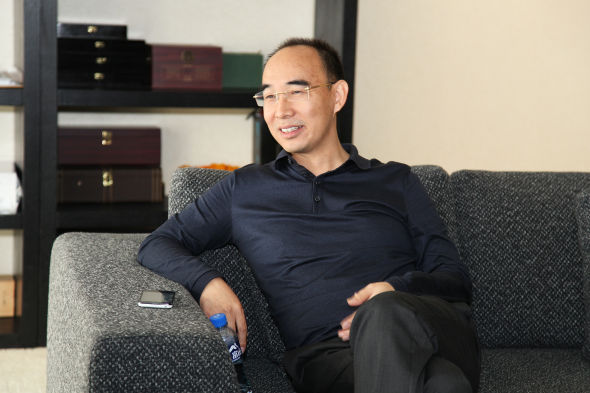
In the north of the city of Zhuhai, known as the “romantic city”, the headquarters of Meizu is located. Last autumn rain refreshed the city streets and not far from the road, among green trees, we saw Meizu Bai Yongxian’s office, here he usually receives journalists, talks about the way of creating the company, which they went through together: Mr. Yongxiang and Meizu founder, Juan Zhang ( Huang Zhang).
')
When you call the name Huang Zhang, few people understand who this is about, but “Jack Wong” is known to everyone who has ever been interested in Meizu. Mr. Zhang never gives an interview and remains completely unknown outside the company. The only way he voices his opinions is through the Meizu forum, where Mr. Zhang is known by the nickname J.Wong. “He’s a real tutor: he rarely intervenes, but always observes what is happening,” describes Bai.

As soon as the Meizu M9 smartphone gained a certain fame, Zhang began to move away from the Meizu business, transferring a variety of routine tasks to Yongxiang, he focused on the design of the devices and the interface. Zhang rarely appears in the company's office, he works mainly at home, so his spacious office on the fifth floor of the headquarters is always empty, without a trace of the owner’s presence in it. It is this office that is used by the management department to receive VIP guests.
Bai says Zhang is a big fan of music and a 100% geek. “He has an innate passion for electronic devices.” He can take a prototype of the Meizu machine home and use it continuously for a month, and then put forward a proposal on how to change the back cover radian, ”says Bai.

At home, Zhang gathered not only various expensive musical equipment and special equipment, he went much further: he broke and rebuilt the walls and ceiling of the house, and only to improve the acoustics! Once he told Bai: “At first I had big problems with the equipment, but soon I thought maybe the problem was the cord, which I immediately replaced. Until today, I could not even imagine that replacing one cord could cost tens of thousands of dollars. Then I decided that maybe the problem was in the house, there was a slight vibration near the floor, so I had to replace it. Then I have doubts about the lighting in the room, and replaced it. And in the end it was necessary to break the walls, because the cable was incorrectly laid in them. Similar suspicions arose constantly until I equipped the tools with special adapters and did not select all for them a separate electrical circuit. ”
“Most entrepreneurs are more interested in the success and profitability of the company, but Zhang is different from them. His passion for detail and the pleasure with which he works on them is something that is hard for us to understand, ”says Bai.
It was Zhang's passion for music and digital technology that determined Meizu’s original orientation on MP3 devices. “The company started its activities in 2003, when there was a boom in MP3 devices. From the very beginning and to this day, Meizu had no investors; initially, we were completely dependent on Zhang's income, ”recalls Bai.
It is curious that the first MP3 player released by Meizu was called the MX, as was the current flagship among smartphones. We call it "life from MX to MX". However, the “then” MX, the MP3 player, was less well known and popular than the current MX smartphone, which I hold in my hands. According to Bai, "this was just the beginning."

The biggest success of Meizu, which brought the company to the top among manufacturers of players in China in 2006, was the mini-player, which went on sale in the same year. This MP3 player was distinguished from the others by two important features: at that time, a touch screen and a seamless case that was rare in players in the Chinese market. “And although our mini player couldn’t be fooled by the Apple iPod in popularity all over the world, it was in the lead in sales in our country,” says Bai.

Also in 2006, various phones with the dominant music component from Sony Ericsson, Motorola and Nokia began to conquer the market. It all said that the era of MP3 players will soon end, and they will be replaced by "smart phones".
“The love of music and electronic devices determined that at the beginning of the company's journey, we started manufacturing MP3 players. Then we began to follow the changes in society more and found that now everyone has a mobile phone, he suddenly became necessary for everyone. It is he who will develop and change, and will never disappear, unlike MP3 players, which have a hazy future and a threat to be ousted by other devices at any time, ”says Bai.
In his opinion, manufacturers of MP3 players have only two options: reduce the cost of production of the device and / or be content with a small niche of consumers. “Both options do not suit us. We realized that a smartphone can incorporate all the functions of an MP3 player and what the future of the industry is about smartphones. ”
At the end of 2006, Meizu decided to repurpose its smartphone business. In Zhang’s dreams, Meizu’s phone had to be intelligent, have a large touch screen with multitouch support and fast Internet access.
Nevertheless, the initial period fell on the “dark days” of the smartphone industry, which came after the appearance of the Apple iPhone, January 9, 2007, which radically changed our understanding of smartphones and the industry as a whole. Before the release of the Android operating system at the end of 2008, it was still a long time. At the end of 2006, Mr. Zhang chose between three operating systems: Windows Mobile, Linux and Win CE.
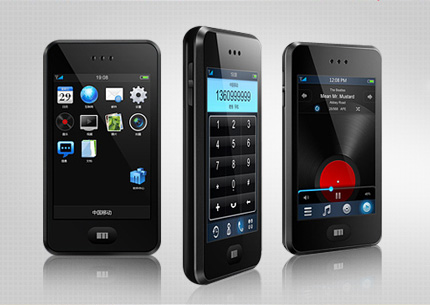
The reason why Meizu did not choose Windows Mobile, in contrast to the same Dopod company (HTC brand for the Azita region), was a bad user interface. “At Microsoft, they simply transferred their ideas from the computer operating system to the telephone, while retaining all the functions, which negatively affected the usability and aesthetic component. Obviously, this was not what Meizu needed, ”says Bai.
At the same time, the size of licensing fees for each device based on Windows Mobile significantly exceeded $ 10. Actually, this was the second reason why Meizu abandoned Windows Mobile. Meanwhile, the Meizu team of engineers had only 18 people, which was not enough to cope with Linux, so Win CE was the only reasonable option for Meizu.
“Win CE is in some way a built-in operating system used primarily in car navigators, both embedded and separate, in engineering equipment and other industrial devices,” says Bai. “Win CE, in fact, is not an operating system for mobile phones, as there is no data transfer protocol or corresponding modules for installing applications. But worst of all, it does not have a ready-made interface for a Wi-Fi module. Many things for us seemed completely incomprehensible. Our engineers worked 24 hours a day, 7 days a week. It is hard to imagine how much of our strength we invested in the process of finding solutions and how difficult it was for us to find it all the same.
But the most difficulties awaited us with the touch screen. Meizu got its first knowledge of capacitive touchscreens from the British manufacturer Quantum’s sales manager. “We were greatly inspired when we saw the sample - transparent glass, on which the sensor layer was installed. From the same moment we started cooperation with Quantum in the production of touch screen phones, ”says Bai.
“We worked on the touch screen throughout the year, but still there were unresolved problems. First, the touch was not accurate; secondly, the identification point was not stable after touching; and, thirdly, the linear function was very bad, we could not even draw a straight line across the entire screen, ”notes Bai. “We tried all possible methods: it was somehow possible to use the device, but it was impossible to put it on the market”.
“It was our hardest year. No matter how rich your imagination is, you still can’t imagine all our torment. But if you suffer for a long time, you still end up with something, ”says Bai. Later, Meizu found a new partner - Synaptics - and solved the problem with the touch screen. Synaptics is one of the three leading manufacturers of touchscreens in the world. The other two are Apple and ATMEL, the latter later swallowed Quantum.
But even the strongest love is no problem. And although the problem of the touch screen was successfully resolved in the M8, which began to conquer the market, some users after some period of use had problems with the touch screen caused by manufacturing shortcomings.
Under the pressure of a large number of disgruntled users, Meizu was forced to make a statement that anyone who finds a defective M8 can exchange it for a new, serviceable one for free. Fortunately, the profit that the company earned in 2007 thanks to the successful sales of the mini-player helped realize the promise, ”adds Bai.“ The Meizu M8 allowed us to seriously declare ourselves in the smartphone market. Even now, many people fondly remember him. ”
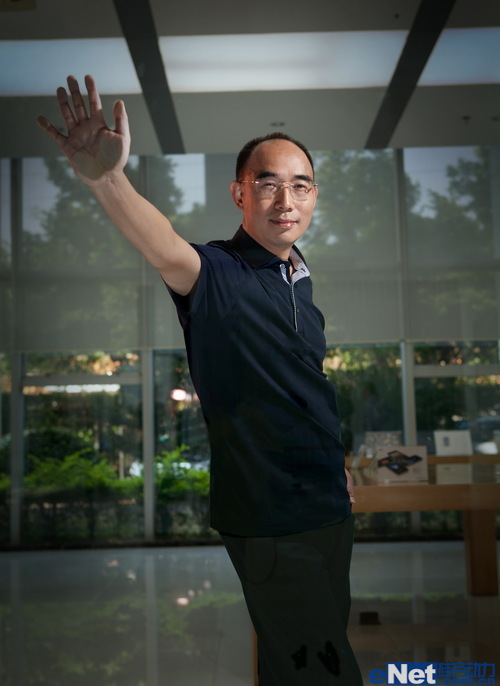
Bai says that the South Korean company iRiver was once one of the most famous manufacturers of MP3 players. Sales of devices from the iFP series even surpassed iPod sales. But having missed the possibility of timely transformation at a time when the era of MP3 players began to end, the company slowly but surely went into oblivion.
“Some time later, Director Huang Zhang and I met several iRiver directors in Shenzhen. They admitted that at one time they thought about switching to the production of mobile phones, but they did not dare, because, according to their estimates, the costs would be as much as $ 170 million! When we at Meizu did what we did, we practically did not risk anything, since we had nothing. In other words, if neither our perseverance and perseverance, if not for the appearance of the M8, Meizu would have been gone for a long time! ”
In the production of smartphones, the company exhibits consistency, sometimes bordering on "stubbornness." For example, take the screen resolution of Meizu MX - 960x640 pixels, which is a 3: 2 ratio and is significantly different from the 16: 9 ratio currently prevalent. The reason why we do not change the proportions to the generally accepted ones is that Zhang thinks that a wider screen that displays more words horizontally is easier to read.
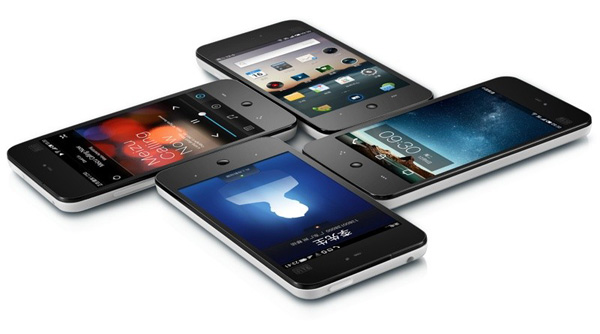
At one time, only Meizu and iPhone 4 / 4s were devices on the market with a similar resolution, but in iPhone 5 they switched to a narrower 16: 9 resolution. In a word, Meizu remains the only player on the basis of Android, not abandoning the old proportions (the interview was prepared before entering the market MeizuMX2).
Of course, this solution has its price and its consequences. Meizu should negotiate directly with software vendors and convince them to support 3: 2 resolution. But the developers do not make a special bet on Meizu due to its insignificant presence in the market. As a result, images of many applications (especially games) are artificially stretched and look a bit flat.
But at the same time, Meizu is following user reviews: it has already been confirmed that in the next generation MX2 a new screen resolution will be used (1280x800 pixels, the aspect ratio is 16:10).
Many people working in this field believe that the prices for Meizu devices are strange: “the cost of a quad-core MX smartphone is almost 12 thousand rubles (2399 yuan). Not so much, but still can not afford for low-income users; not too much, but not cool enough for a discerning consumer ... "says one of the experts in this field in an interview with the Sina Science and Technology website.
Bai admits that “the annual sales of Meizu smartphones is small, but it is showing steady growth of about 1 million vehicles per year. We never published official sales statistics because we don’t want to lie. Our position - we either do not speak at all, or we speak the truth. ”
"On the one hand, we strive to create the best smartphone, and on the other, we are forced to maintain a steady income." Bai shows the back cover of the Meizu MX: “It is made using double injection molding technology — white inside and transparent on the outside, resembling crystal. The processing is very complicated. First pressing is done, and then the inner white layer is ground on the machine to make the lid thinner. ”

Bai says that many inconspicuous but expensive engineering solutions in Meizu products, including black PCB and a metal frame, cause an increase in the cost of the device. “In order to guarantee the high quality of the smartphone, Meizu still does not use third-party assemblers. All components and components are delivered to Meizu headquarters, where they assemble the devices. ”
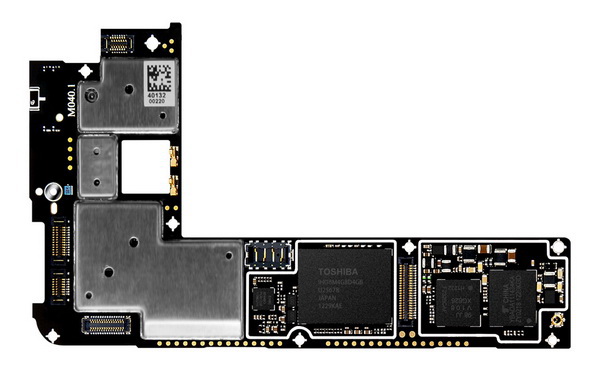
While other manufacturers are chasing the maximum technical characteristics, prices and market dominance, Meizu spends all its time and effort in producing what the company considers worthy and correct. The company stands apart from all global trends, with the exception of the tradition to produce a new device each year.
“Probably due to the fact that we never depended on investments, Meizu did not experience either global failure or global success. Going further is more important than just going faster! ”Recalls Bai, Zhang’s favorite saying, with which he usually inspires the company. For him, the final product is always more important than anything else.
“Meizu is betting on the future: someday, Chinese users will stop paying attention to insane technical specifications and price tags, someday they will want something more. And then the Meizu era will come, ”says the head of the company.
Original interview
English translation
In the near future, a detailed review of the Meizu MX2 smartphone, as well as disassembly of the device will appear in our blog on Habré. We remind you that you can also find all the news on the official Russian site Meizu , and on the forum you can ask questions about our smartphones and get hints from device owners.

In the north of the city of Zhuhai, known as the “romantic city”, the headquarters of Meizu is located. Last autumn rain refreshed the city streets and not far from the road, among green trees, we saw Meizu Bai Yongxian’s office, here he usually receives journalists, talks about the way of creating the company, which they went through together: Mr. Yongxiang and Meizu founder, Juan Zhang ( Huang Zhang).
')
Mad Huang Zhang
When you call the name Huang Zhang, few people understand who this is about, but “Jack Wong” is known to everyone who has ever been interested in Meizu. Mr. Zhang never gives an interview and remains completely unknown outside the company. The only way he voices his opinions is through the Meizu forum, where Mr. Zhang is known by the nickname J.Wong. “He’s a real tutor: he rarely intervenes, but always observes what is happening,” describes Bai.

As soon as the Meizu M9 smartphone gained a certain fame, Zhang began to move away from the Meizu business, transferring a variety of routine tasks to Yongxiang, he focused on the design of the devices and the interface. Zhang rarely appears in the company's office, he works mainly at home, so his spacious office on the fifth floor of the headquarters is always empty, without a trace of the owner’s presence in it. It is this office that is used by the management department to receive VIP guests.
Bai says Zhang is a big fan of music and a 100% geek. “He has an innate passion for electronic devices.” He can take a prototype of the Meizu machine home and use it continuously for a month, and then put forward a proposal on how to change the back cover radian, ”says Bai.

At home, Zhang gathered not only various expensive musical equipment and special equipment, he went much further: he broke and rebuilt the walls and ceiling of the house, and only to improve the acoustics! Once he told Bai: “At first I had big problems with the equipment, but soon I thought maybe the problem was the cord, which I immediately replaced. Until today, I could not even imagine that replacing one cord could cost tens of thousands of dollars. Then I decided that maybe the problem was in the house, there was a slight vibration near the floor, so I had to replace it. Then I have doubts about the lighting in the room, and replaced it. And in the end it was necessary to break the walls, because the cable was incorrectly laid in them. Similar suspicions arose constantly until I equipped the tools with special adapters and did not select all for them a separate electrical circuit. ”
“Most entrepreneurs are more interested in the success and profitability of the company, but Zhang is different from them. His passion for detail and the pleasure with which he works on them is something that is hard for us to understand, ”says Bai.
From MP3 player to smartphone
It was Zhang's passion for music and digital technology that determined Meizu’s original orientation on MP3 devices. “The company started its activities in 2003, when there was a boom in MP3 devices. From the very beginning and to this day, Meizu had no investors; initially, we were completely dependent on Zhang's income, ”recalls Bai.
It is curious that the first MP3 player released by Meizu was called the MX, as was the current flagship among smartphones. We call it "life from MX to MX". However, the “then” MX, the MP3 player, was less well known and popular than the current MX smartphone, which I hold in my hands. According to Bai, "this was just the beginning."

The biggest success of Meizu, which brought the company to the top among manufacturers of players in China in 2006, was the mini-player, which went on sale in the same year. This MP3 player was distinguished from the others by two important features: at that time, a touch screen and a seamless case that was rare in players in the Chinese market. “And although our mini player couldn’t be fooled by the Apple iPod in popularity all over the world, it was in the lead in sales in our country,” says Bai.

Also in 2006, various phones with the dominant music component from Sony Ericsson, Motorola and Nokia began to conquer the market. It all said that the era of MP3 players will soon end, and they will be replaced by "smart phones".
“The love of music and electronic devices determined that at the beginning of the company's journey, we started manufacturing MP3 players. Then we began to follow the changes in society more and found that now everyone has a mobile phone, he suddenly became necessary for everyone. It is he who will develop and change, and will never disappear, unlike MP3 players, which have a hazy future and a threat to be ousted by other devices at any time, ”says Bai.
In his opinion, manufacturers of MP3 players have only two options: reduce the cost of production of the device and / or be content with a small niche of consumers. “Both options do not suit us. We realized that a smartphone can incorporate all the functions of an MP3 player and what the future of the industry is about smartphones. ”
Born in agony. Meizu M8
At the end of 2006, Meizu decided to repurpose its smartphone business. In Zhang’s dreams, Meizu’s phone had to be intelligent, have a large touch screen with multitouch support and fast Internet access.
Nevertheless, the initial period fell on the “dark days” of the smartphone industry, which came after the appearance of the Apple iPhone, January 9, 2007, which radically changed our understanding of smartphones and the industry as a whole. Before the release of the Android operating system at the end of 2008, it was still a long time. At the end of 2006, Mr. Zhang chose between three operating systems: Windows Mobile, Linux and Win CE.

The reason why Meizu did not choose Windows Mobile, in contrast to the same Dopod company (HTC brand for the Azita region), was a bad user interface. “At Microsoft, they simply transferred their ideas from the computer operating system to the telephone, while retaining all the functions, which negatively affected the usability and aesthetic component. Obviously, this was not what Meizu needed, ”says Bai.
At the same time, the size of licensing fees for each device based on Windows Mobile significantly exceeded $ 10. Actually, this was the second reason why Meizu abandoned Windows Mobile. Meanwhile, the Meizu team of engineers had only 18 people, which was not enough to cope with Linux, so Win CE was the only reasonable option for Meizu.
“Win CE is in some way a built-in operating system used primarily in car navigators, both embedded and separate, in engineering equipment and other industrial devices,” says Bai. “Win CE, in fact, is not an operating system for mobile phones, as there is no data transfer protocol or corresponding modules for installing applications. But worst of all, it does not have a ready-made interface for a Wi-Fi module. Many things for us seemed completely incomprehensible. Our engineers worked 24 hours a day, 7 days a week. It is hard to imagine how much of our strength we invested in the process of finding solutions and how difficult it was for us to find it all the same.
But the most difficulties awaited us with the touch screen. Meizu got its first knowledge of capacitive touchscreens from the British manufacturer Quantum’s sales manager. “We were greatly inspired when we saw the sample - transparent glass, on which the sensor layer was installed. From the same moment we started cooperation with Quantum in the production of touch screen phones, ”says Bai.
“We worked on the touch screen throughout the year, but still there were unresolved problems. First, the touch was not accurate; secondly, the identification point was not stable after touching; and, thirdly, the linear function was very bad, we could not even draw a straight line across the entire screen, ”notes Bai. “We tried all possible methods: it was somehow possible to use the device, but it was impossible to put it on the market”.
“It was our hardest year. No matter how rich your imagination is, you still can’t imagine all our torment. But if you suffer for a long time, you still end up with something, ”says Bai. Later, Meizu found a new partner - Synaptics - and solved the problem with the touch screen. Synaptics is one of the three leading manufacturers of touchscreens in the world. The other two are Apple and ATMEL, the latter later swallowed Quantum.
The thin line between persistence and paranoia
But even the strongest love is no problem. And although the problem of the touch screen was successfully resolved in the M8, which began to conquer the market, some users after some period of use had problems with the touch screen caused by manufacturing shortcomings.
Under the pressure of a large number of disgruntled users, Meizu was forced to make a statement that anyone who finds a defective M8 can exchange it for a new, serviceable one for free. Fortunately, the profit that the company earned in 2007 thanks to the successful sales of the mini-player helped realize the promise, ”adds Bai.“ The Meizu M8 allowed us to seriously declare ourselves in the smartphone market. Even now, many people fondly remember him. ”

Bai says that the South Korean company iRiver was once one of the most famous manufacturers of MP3 players. Sales of devices from the iFP series even surpassed iPod sales. But having missed the possibility of timely transformation at a time when the era of MP3 players began to end, the company slowly but surely went into oblivion.
“Some time later, Director Huang Zhang and I met several iRiver directors in Shenzhen. They admitted that at one time they thought about switching to the production of mobile phones, but they did not dare, because, according to their estimates, the costs would be as much as $ 170 million! When we at Meizu did what we did, we practically did not risk anything, since we had nothing. In other words, if neither our perseverance and perseverance, if not for the appearance of the M8, Meizu would have been gone for a long time! ”
In the production of smartphones, the company exhibits consistency, sometimes bordering on "stubbornness." For example, take the screen resolution of Meizu MX - 960x640 pixels, which is a 3: 2 ratio and is significantly different from the 16: 9 ratio currently prevalent. The reason why we do not change the proportions to the generally accepted ones is that Zhang thinks that a wider screen that displays more words horizontally is easier to read.

At one time, only Meizu and iPhone 4 / 4s were devices on the market with a similar resolution, but in iPhone 5 they switched to a narrower 16: 9 resolution. In a word, Meizu remains the only player on the basis of Android, not abandoning the old proportions (the interview was prepared before entering the market MeizuMX2).
Of course, this solution has its price and its consequences. Meizu should negotiate directly with software vendors and convince them to support 3: 2 resolution. But the developers do not make a special bet on Meizu due to its insignificant presence in the market. As a result, images of many applications (especially games) are artificially stretched and look a bit flat.
But at the same time, Meizu is following user reviews: it has already been confirmed that in the next generation MX2 a new screen resolution will be used (1280x800 pixels, the aspect ratio is 16:10).
The next step: we rely on the convenience of users, and not on the pursuit of impressive features
Many people working in this field believe that the prices for Meizu devices are strange: “the cost of a quad-core MX smartphone is almost 12 thousand rubles (2399 yuan). Not so much, but still can not afford for low-income users; not too much, but not cool enough for a discerning consumer ... "says one of the experts in this field in an interview with the Sina Science and Technology website.
Bai admits that “the annual sales of Meizu smartphones is small, but it is showing steady growth of about 1 million vehicles per year. We never published official sales statistics because we don’t want to lie. Our position - we either do not speak at all, or we speak the truth. ”
"On the one hand, we strive to create the best smartphone, and on the other, we are forced to maintain a steady income." Bai shows the back cover of the Meizu MX: “It is made using double injection molding technology — white inside and transparent on the outside, resembling crystal. The processing is very complicated. First pressing is done, and then the inner white layer is ground on the machine to make the lid thinner. ”

Bai says that many inconspicuous but expensive engineering solutions in Meizu products, including black PCB and a metal frame, cause an increase in the cost of the device. “In order to guarantee the high quality of the smartphone, Meizu still does not use third-party assemblers. All components and components are delivered to Meizu headquarters, where they assemble the devices. ”

While other manufacturers are chasing the maximum technical characteristics, prices and market dominance, Meizu spends all its time and effort in producing what the company considers worthy and correct. The company stands apart from all global trends, with the exception of the tradition to produce a new device each year.
“Probably due to the fact that we never depended on investments, Meizu did not experience either global failure or global success. Going further is more important than just going faster! ”Recalls Bai, Zhang’s favorite saying, with which he usually inspires the company. For him, the final product is always more important than anything else.
“Meizu is betting on the future: someday, Chinese users will stop paying attention to insane technical specifications and price tags, someday they will want something more. And then the Meizu era will come, ”says the head of the company.
Original interview
English translation
In the near future, a detailed review of the Meizu MX2 smartphone, as well as disassembly of the device will appear in our blog on Habré. We remind you that you can also find all the news on the official Russian site Meizu , and on the forum you can ask questions about our smartphones and get hints from device owners.
Source: https://habr.com/ru/post/161449/
All Articles